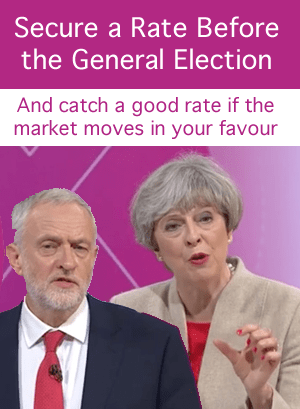The GBP Election Day Guide: Timelines, Key Constituencies and Impact on GBP v EUR and USD
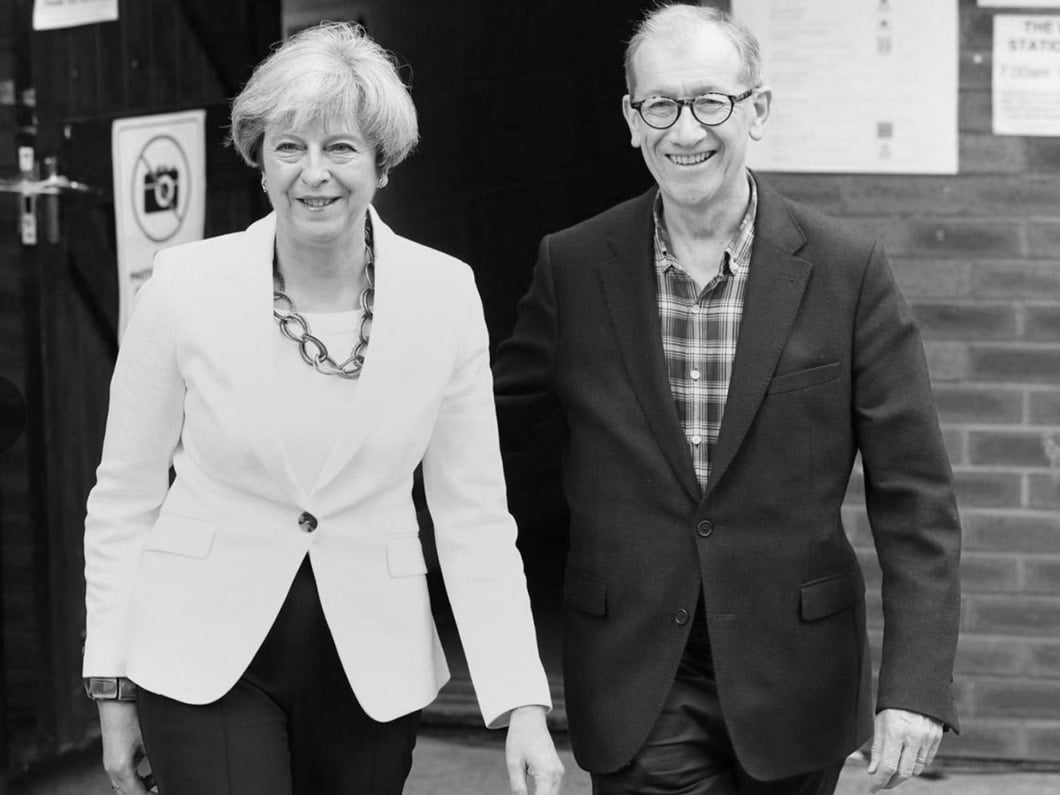
- Exit poll at 10:00PM to set the tone for the night
- Substantial volatility seen between 1.00 and 1.30 if Vale of Clywd and Telford swing one way or another.
- See our chart below for the 20 main marginal constituencies
- How might the Pound react? Detailed scenario coverage provided
- Pound to Euro exchange rate at 1.1515 at time of writing, Pound to Dollar exchange rate at 1.2939
Exchange rate markets are keeping Pound Sterling contained to familiar ranges ahead of the release of results of what is expected to be a tight general election.
There is little to do now but wait. Voting is underway and will continue through to 22.00 UK time at which point the first exit polls will be released. This should provide some fairly strong indications about how the election has gone for the main parties.
The outcome of vote has gone from being a sure thing for the Conservatives to a close fight with Labour according to the polls.
Of six polls published on Wednesday, two showed the Conservatives widening their lead over Labour, two showed a narrowing and two were unchanged.
They mostly suggested she would increase the small majority she inherited from David Cameron last year, shortly after the surprise referendum decision to take Britain out of the European Union.
The divergence in poll results has been put down to how pollsters choose the people they talk to - sampling, and how they assess whether they are likely to vote or not – voting intentions.
Impact on The Pound
Broadly speaking, a large Conservative majority is expected to lift the Pound, and the extent of the win could determine the scale of the Pound's move.
A small majority of below 30 could actually result in the Pound weakening.
Whilst the initial knee-jerk reaction to a big Tory win will almost certainly be for Sterling to appreciate, gains may be short-lived if the assumptions on which they are based quickly prove misguided.
This may well be the case in this election.
The argument is that a large majority will allow Theresa May to ‘crowd out’ the hard-right splinter in her party, enabling her to negotiate a softer, more economically benign Brexit, however, not all analysts think this assumption is an accurate portrayal of what will happen.
“A strong Conservative majority ensures policy continuity on nearly all fronts. At the same time, however, this outcome should also cement expectations for a hard Brexit,” says TD Securities Richard Kelly, contrary to the received wisdom.
Kelly dismisses the argument that just because the far right will not be able to hold the government to ransom, May will automatically negotiate a softer Norway or Switzerland-style Brexit.
“The government may be able to contain those elements looking for a more aggressive stance toward the EU, but this is not guaranteed. That will be a consideration for another day, however, as it will take some time before the UK’s ultimate negotiation strategy is revealed. In any event, these expectations should already be fully priced in for the pound,” added Kelly.
Thus, while a knee jerk reaction higher in Sterling is highly likely, early gains could be vulnerable to erosion when expectations meet harsh reality.
Scenario Modelling on EUR/GBP
The most popular currency pair followed on Pound Sterling Live is the Euro v Pound exchange rate and analysts at TD Securities have obliged us by providing their forecasts on potential election outcomes on EUR/GBP.
These scenarios are outlined below.
Large Conservative Majority
Firstly, only a strong conservative majority of over 40 seats will strengthen Sterling.
In such a circumstance EUR/GBP is likely to fall from its current level (in the 0.86s) to an initial station at 0.8525 and then 0.8300.
TD Securities rate the chances of this happening at 20%.
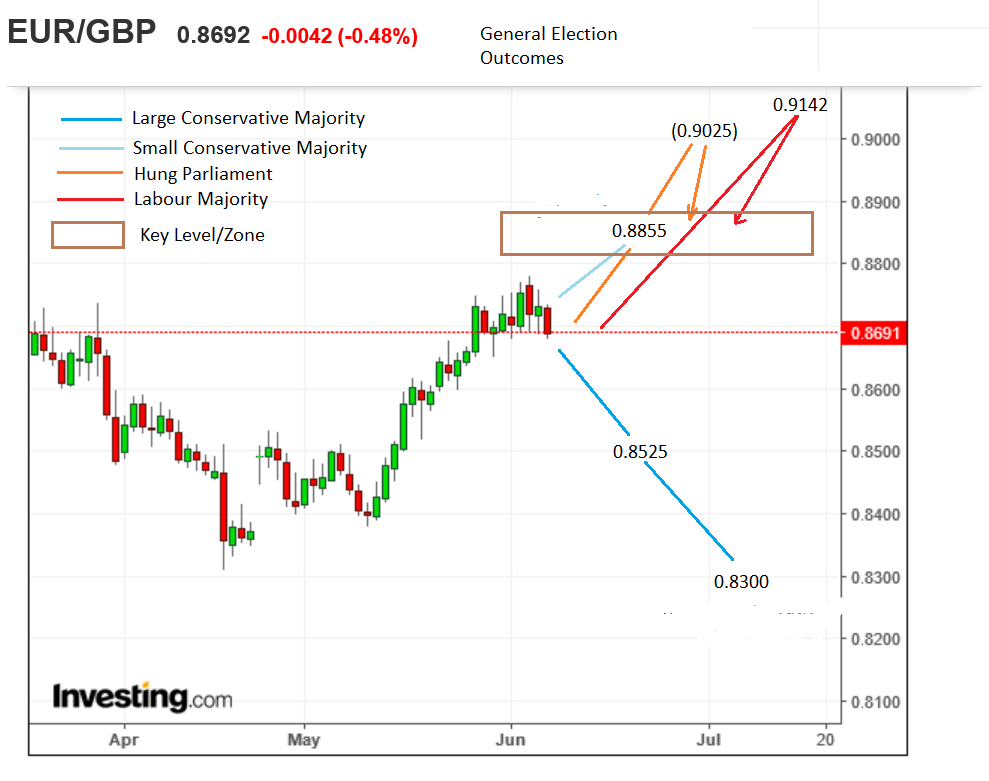
Small Majority
A Conservative win with a small majority, defined as below 40 seats, would actually see the Pound weaken as fears the far-right of the party would have too much say in Brexit negotiations increased the possibility of no-deal and a hard Brexit.
In such a scenario EUR/GBP would initially probably rally to a key support and resistance level at 0.8855.
TD consider this as the most likely outcome at 45%.
Hung Parliament
A hung parliament will have a similar outcome to a small conservative majority but probably be even more Pound-negative due to the increased uncertainty.
In such a scenario TD see EUR/GBP rising to 0.9025 temporarily before falling back down to 0.8855.
TD estimate a 20% chance of a hung parliament.
Labour Win
A Labour win will probably result in a small labour majority given Labour has never led even one of the polls in the run up to the election so a sweeping majority is highly unlikely.
If Labour win, the Pound will depreciate even further, according to TD, falling to as low as 0.9142 potentially - but then pulling-back quite quickly to 0.8855.
TD see a 15% chance of Labour winning.
Not all analysts are bearish for Sterling in the event of a Labour win, however, those at Deutsche Bank see a possibility of the Pound appreciating on the back of such an outcome.
Labour's economic agenda may also provide support for Sterling, according to advisory service Capital Economics, given its emphasis on public spending and infrastructure investment; both of which could result in hgiher growth.
The conservative budget is much more fiscally tighter in contarst.
Election Timetable
On the morning of Thursday, June 8, polling stations will open at 7am and close at 10pm.
Just after polls close an official exit poll will be published, and this is likely to be an important moment for the Pound.
Exit polls in past have been particularly accurate at forecasting the end result, so if Thursday’s exit polls show a wide swing in either direction volatility is expected on currency markets at an early stage in the evening.
“There will be an exit poll published as voting wraps up at 10pm. This should set the tone of the constituency results set to come out over the following twelve hours. While the 2005 and 2010 exit polls were almost perfectly accurate, the 2015 exit poll under-predicted the final result by 14 seats,” said TD Securities Head of Global Research Richard Kelly.
In 2015 the Pound moved two-thirds of its total direction after the release of the exit poll, with the final third unfolding as the actual results came in during the night.
After polls close votes will immediately be counted and results published as the night progresses.
The constituency of Houghton and Sunderland is normally the first to release its results; in 2015 it managed to have a complete count by 10.48.
The majority of constituencies, however, do not normally release their results until after 3am, with 75% of constituencies publishing between 3 and 6am.
Over half of constituencies will normally have announced their votes by 4am – a key time for gauging the final result, and also therefore for the currency markets.
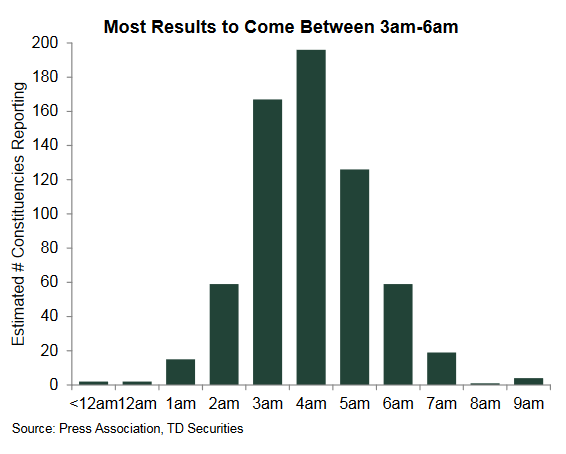
Constituencies To Watch
The main focus during the night will be on marginal and bellweather constituencies, such as Derby, Ealing Centre and Dartford.
The results from marginal seats where either the Conservatives or Labour hold a slim majority will quickly tell commentators whether there is a substantial swing in favour of either party.
The earliest marginals to look out for, based on 2015 result release times, are Vale of Clywd at 1.00 (Tory), Telford at 1.30 (Tory), Derbyshire North East 2.15 (Lab) and Bridgend 2.30 (Lab).
There could be substantial volatility between 1.00 and 1.30 if Vale of Clywd and Telford, which have small Conservative majorities swing one way or another.
If the Conservatives lose them to Labour then the Pound will probably start to mark down significantly.
If the Conservatives hold and increase their majorities in these two key seats then Sterling could rally.
The more important Labour marginals released their results later in 2015 so may not be as significant if they are as late this year.
Below is a chart of the 20 main marginal constituencies for the Conservatives (in the left column) and Labour (in the right column).
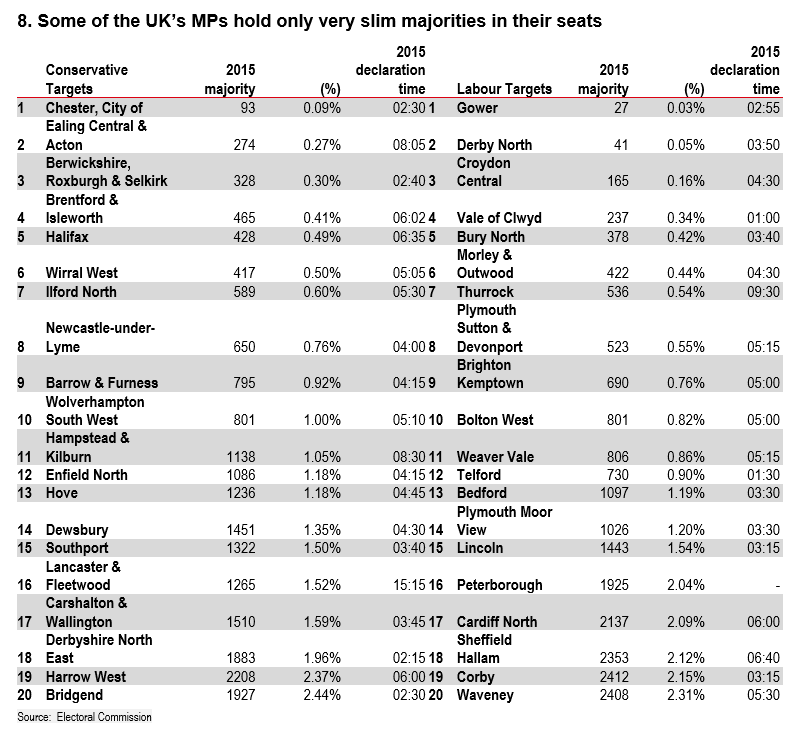
Bellweathers are also key predictors.
These are constituencies which have repeatedly predicted the winner according to how they themselves voted.
The most important one is Dartford which has successfully predicted the winning party since 1964.
Dartford was counted at 2.45 in 2015 – it is a safe conservative seat with a 12,345 majority!
The announcement of the results from Dartford are likely to be another major focus point for markets.
All the most accurate bellweathers are currently in the hands of the Conservatives and most are expected to either return to conservative hands or be closely contested as per the chart below.
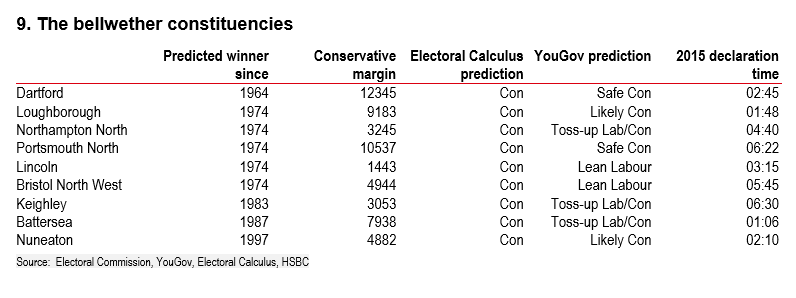
2017 Themes
Commentators are also likely to be alive to how specific constituencies vote in relation to various themes specific to this election, which could provide important ‘circumstantial’ evidence as to the eventual overall election result.
Brexit
The first of these themes revolves around Brexit and focuses on constituencies where there is a disconnect between the way the MP voted and the way the constituency voted in the referendum.
Where an MP took a pro-Remain stance in a pro-Brexit constituency analysts will be looking for how the electorate responds: if they vote the MP out then it is possible to conclude that the Brexit vote has strengthened. If this happens in several constituencies then it might be possible to surmise that the whole country has become more anti-EU and therefore probably pro-Conservative.
Likewise, in the lesser number of constituencies in which the electorate voted to Remain but the MP to Leave – such as Kate Hoey’s Vauxhall – a swing against the incumbent might be a sign the electorate on a broader footing might be swinging to a softer Brexit pro-Remain stance, which would favour Labour and Liberal Democrat MPs.
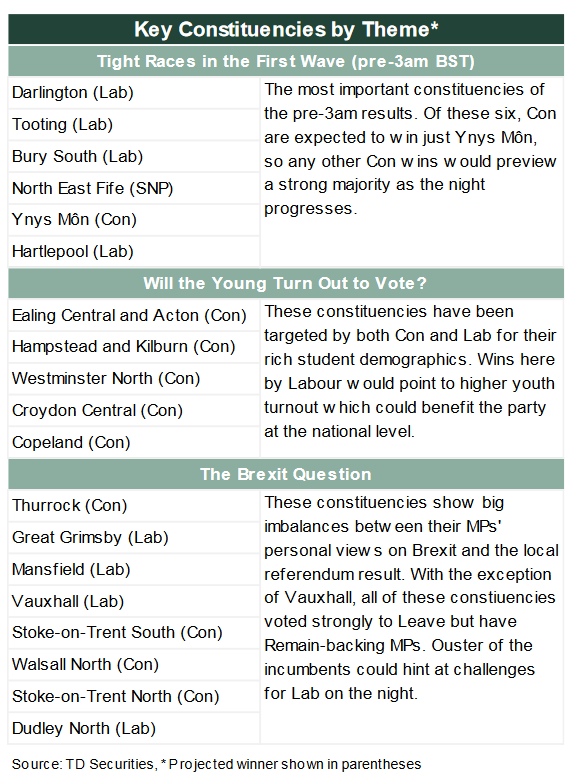
Age
Voter age appears to be another key theme emerging in this election as the country becomes ever more divided along party political and European lines.
Age appears to be a key determinant of how someone will vote, whether they will vote and what they think of Europe.
A clear chasm has opened up between the more conservative anti-European older generation and the more liberal, left wing, pro-EU youth.
The problem for Labour and the Liberals, however, is young voter apathy.
Young voters are less likely to actually turn up to vote.
No-one knows how many will turn out on the day, but there is a feeling of heightened awareness of the problem in this election which could spur the young to emerge.
If they do turn out in large enough numbers they could swing the election to the left to a substantial degree.
The extent of young voter turnout will be difficult to ascertain but analysts will look to specific constituencies which have a high proportion of students as a gauge, such as those in North West London like Hendon, Brent, Ealing, those in Norwich, the large university towns like Oxford and Cambridge and rural Scotland.
If results during the night show those constituencies have lurched leftwards then it will be a sign of higher young voter turnout, and, if extrapolated across the country, could be a sign that Labour and the Liberal Democrats especially, will do well.

